
views
Thinking about Your Lifestyle

Pick hamsters if you want a low-cost pet. Unlike dogs, cats, or horses, hamsters generally won’t put too big a dent in your budget. They’re relatively cheap at most pet stores, and their day-to-day upkeep also won’t get too expensive. Of course, you should always be prepared for an emergency vet visit (as with any pet). The initial cost of a hamster shouldn’t be more than about $20 USD at your local pet store. You’ll also need to buy a cage, and this could cost as much as $200 USD. After the initial costs, hamsters will probably run you about $50-$100 USD per year.

Choose a hamster if you don’t have space for a larger animal. Hamsters don’t need tons of space, which is huge plus for some owners. You need room for a cage that’s a minimum of 12 inches wide x 12 inches high x 18 inches long (30.48 x 30.48 x 45.72 cm) for a single hamster. If possible, you should also have a slightly larger area to provide room for a play gym or tunnels. For every additional hamster, you’ll need to add an extra 0.5 cubic feet (0.014 cubic meters) to the cage size. Tunnels and play gyms still won’t take up too much room. Plan on reserving a small corner in a guest room or home office for a hamster.
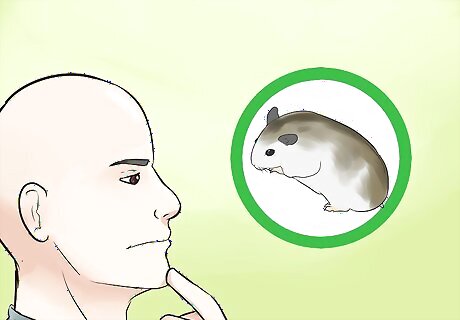
Go for a hamster for a low-maintenance but entertaining pet. While hamsters like to be handled once they’re used to you, they’re also quite independent. They’re nocturnal, so their most active time will be in the evenings and after you go to bed. However, it’s super fun to watch these guys play when your awake times overlap!
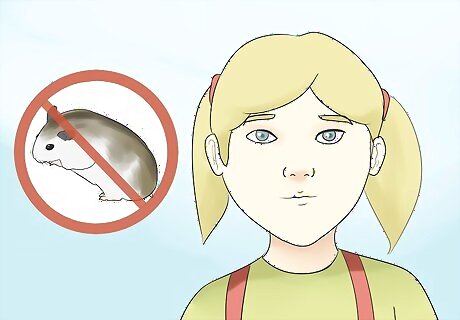
Avoid hamsters if you have children under 8. Hamsters actually don’t make great pets for small children. Because hamsters are so little, they need to be handled very carefully. Little kids can’t quite control their movements well enough to do this, so wait until your children are a little older to get a hamster. Hamsters can also spread salmonella, which is especially dangerous for children under 5.
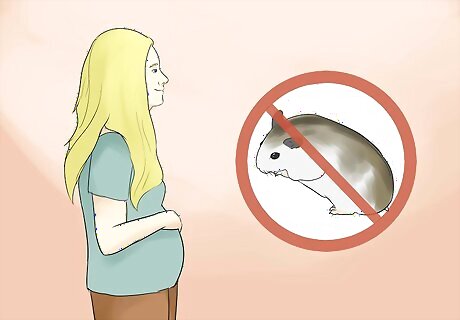
Avoid hamsters if you are or will soon be pregnant. Because hamsters can transmit salmonella and a virus called Lymphocytic choriomeningitis to humans, they’re not great pets for pregnant women. Passing these infections to unborn children can cause major problems with fetal development.

Check for restrictions on hamsters in your area. Some places, such as Hawaii, don’t allow people to own hamsters. Go online or call your local government officials to find out what the laws are on hamster ownership where you live. Because Hawaii’s climate and environment is similar to hamsters’ natural habitats, they could possibly survive in the wild there. In that case, they might multiply and become a huge problem on the island.

Check in with any housemates and/or landlords. Make sure everyone you live with is on board with getting a hamster. If you rent your home, you’ll also need to ask your landlord or rental company if it’s ok for you to add your furry friend to the household. You may want to schedule a doctor’s appointment for anyone who’s concerned that they might be allergic to the dander from a hamster. If they’re allergic to other animals or have asthma, a hamster may not be the right fit for your household.
Meeting the Hamster’s Needs
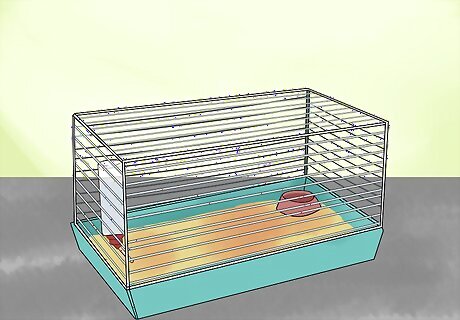
Make sure you can afford the right cage. There are lots of hamster cages to choose from. However, it’s best to invest in a metal wire cage that’s been PVC or powder coated, as these are most durable. Be sure to purchase a mat to go on the bottom of the cage underneath the bedding. For Syrian hamsters, the wires should be no more than 0.5 inches (1.27 cm) apart. For dwarf hamsters, find a cage with wires no more than 0.25 inches (0.64 cm) apart. Hamster cages will usually cost somewhere between $100-$200 USD, depending on the size and material type. You should also purchase high-quality bedding made of plant fibers. A 50-L pack will cost about $30 USD.

Add the cost of pellets and supplemental food to your budget. Pellets will make up about 75% of your hamster’s diet. You should also provide some washed and chopped vegetables every other day, and washed, chopped, and peeled fruits once per week. Hamsters can also have alfalfa hay and raisins as treats a couple of times per week. The best vegetables are spinach, chicory, broccoli, carrots, and cauliflower. Avoid onions and potatoes. Hamsters also love pears, peaches, and bananas. Feeding your hamster shouldn’t cost you more than $10 USD per month, including pellet food mix and supplements.

Find out if a vet near you can treat hamsters. Not all vets will treat hamsters, but it’s important for you to find someone who can care for your new pet. Healthy hamsters need to see the vet once a year for a check up. You should also take your hamster to the vet if you notice any of these common symptoms of illness: Diarrhea lasting more than 24 hours. Weight loss. Abnormally long teeth. Glazed eyes. Runny nose. Fur loss or sores. Bloody urine. Vet care shouldn’t cost more than about $100 USD per year, unless you run into an emergency that needs extensive treatment.
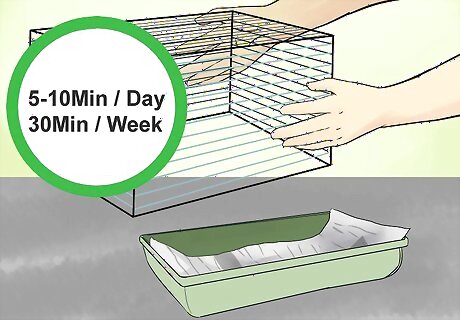
Determine if you have time to clean the cage. You’ll have to do some routine cleaning daily. This will include checking for and removing any soiled bedding, cleaning and replacing the food and water dishes, and taking out any uneaten food. Each week, you’ll need to completely change out the bedding and wipe down the cage with soap and water. Plan for about 5-10 minutes each day and about 30 minutes once per week for cleaning. Put your pet in a safe spot, such as an exercise ball or a separate, hamster-safe cage when you do weekly cleanings. You’ll also need to clean dirty toys at least once a week.
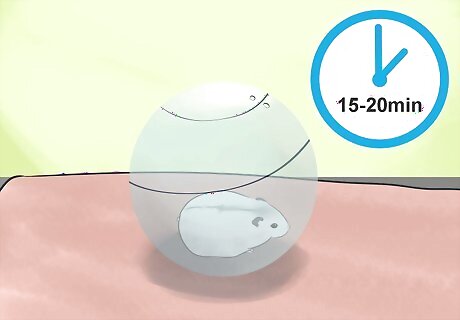
Decide if you can keep your hamster entertained. Hamsters are great at keeping themselves occupied, especially at night. Be sure to provide toys, a safe wheel, and hidden treats in the cage to give them sources of fun. You’ll also need to spend some time playing with your hamster out of its cage each day. Hamsters should get at least 15-20 minutes of time out of their cage per day, either in an exercise ball or in a room that’s been hamster-proofed. Only use an exercise ball once a day and for no more than 20 minutes at a time. Don’t put the exercise ball on the ground near stairs or other pets. Carpeted flooring is safer for ball sessions than wood or tiles.

Figure out if you can make a room safe for hamsters. Since hamsters do best with time out of their cage, you need to give them a safe space to play. To make a room hamster-proof, block off any vents or small openings they could escape into. Securely shut the doors and windows and get other pets out of the space before you let your hamster out. Remove any wires or house plants.
Picking the Right Hamster
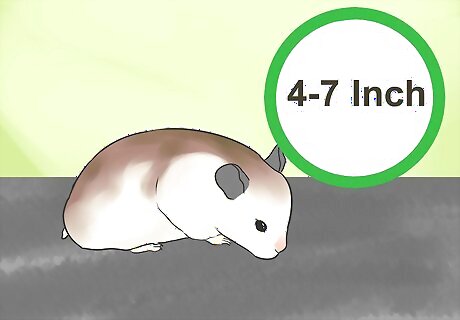
Choose a Syrian hamster for a cute but solitary hamster. Syrian hamsters (also known as Golden or Teddy Bear hamsters) are the most popular kind of hamster. They’re a bit larger than other types, and they’re great with children. However, they are super aggressive with other hamsters and can only live alone in their cage. These hamsters come in a variety of colors. They will be about 4-7 inches (10.16-17.78 cm) long when fully grown.

Pick Dwarf Campbell Russians to get a pair that bonds with each other. If you’re more interested in getting a pair of hamsters, this could be the type for you! These guys will do just fine in same-sex pairs so long as they’re introduced within the first few months of their lives. They can be a little nippy, so they may not be the best option for small children. You can still go for this species if you have young kids. You may just need to provide careful supervision during playtimes. These hamsters are generally greyish brown with spots of creamy fur on their sides and white on their tummies. They won’t get bigger than 4 inches long (10.16 cm).
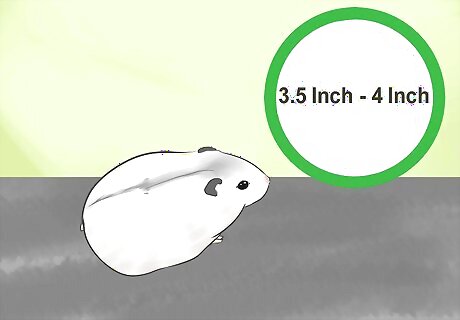
Go with Dwarf Winter White Russians for a sweet, small hamster. Winter whites can also be kept in same-sex pairs if introduced young. They’re more social than Campbells, and they’re known for their sweet disposition. Dwarf Winter White hamsters come in Pearl or Sapphire colors, or a combination of the two. Pearl is a pure white color, while Sapphire is a greyish-purple. They’re even smaller than other Dwarf hamsters, measuring about 3.5-4 inches (8.89-10.16 cm) when full grown.
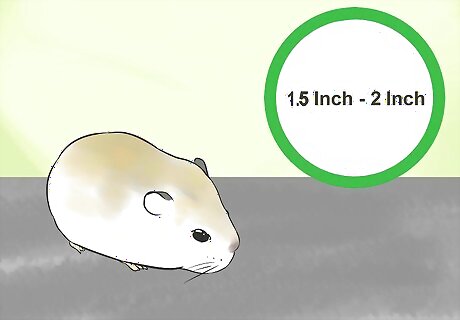
Select Roborovski Dwarfs for an agile hamster. While these hamsters are also social and can be with others of the same sex, they’re not the best choice for handling. They are tiny and can move around quite well, so it’s easy for them to escape, get lost, and become injured. These little guys are only about 1.5-2 inches (3.81-5.08 cm) long!
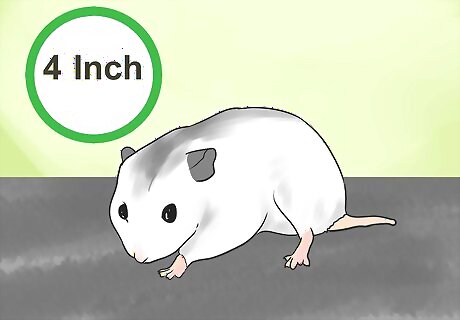
Opt for Chinese hamsters for a smaller solitary hamster. These hamsters have a slightly different body type from most other species. They’re more long and slender, like a mouse. Like Syrian hamsters, they do best alone but are generally sweet with people. These hamsters are similar in size to typical Dwarf hamsters, reaching about 4 inches (10.16 cm) in length.

Choose male hamsters for less aggression. Male hamsters are generally a bit more calm than females. They may be less aggressive toward people and could be friendlier. However, your hamster’s level of aggression will depend on the individual animal and whether you provide a calm, loving environment for it.
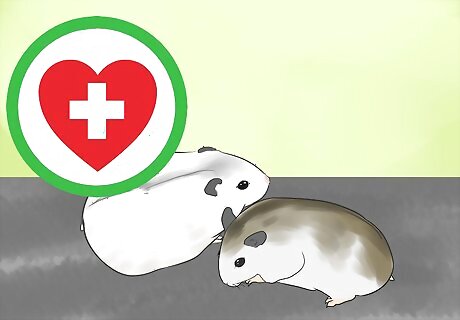
Make sure your hamster is healthy. If you’re ready to buy your hamster, be sure you pick out a healthy one! Most pet stores will have a variety of hamsters for you to choose from, so head on down to your local shop. Look out for these problems before making your final decision: Make sure the hamster’s eyes are clear and free of cloudiness or discharge. Look for diarrhea by glancing around the cage and examining the hamster’s bottom. Check for parasites by avoiding anything but a smooth, glossy, and full coat. Avoid hamsters with misaligned teeth, a missing or partial tail, or damaged feet or ears.
















Comments
0 comment